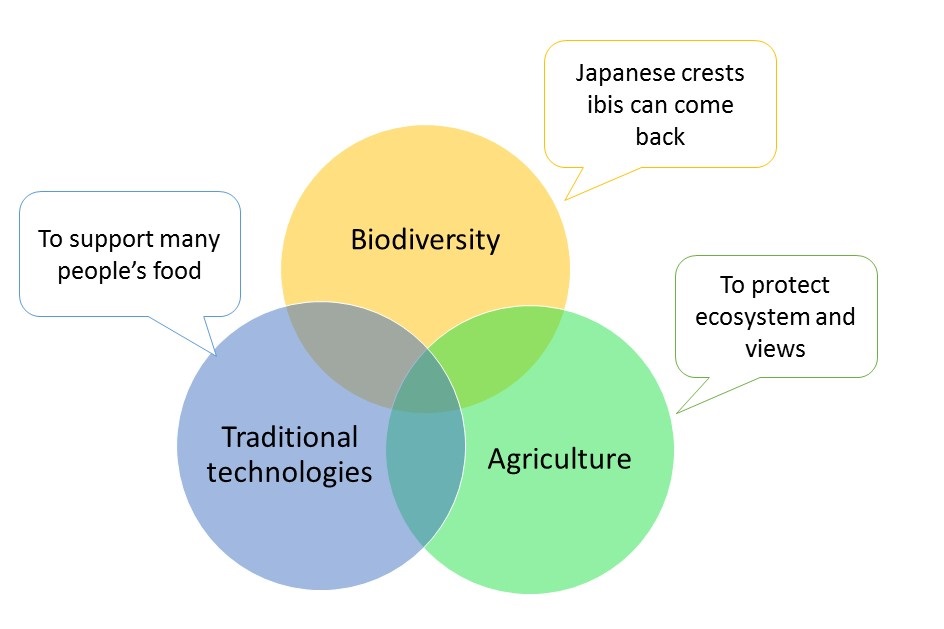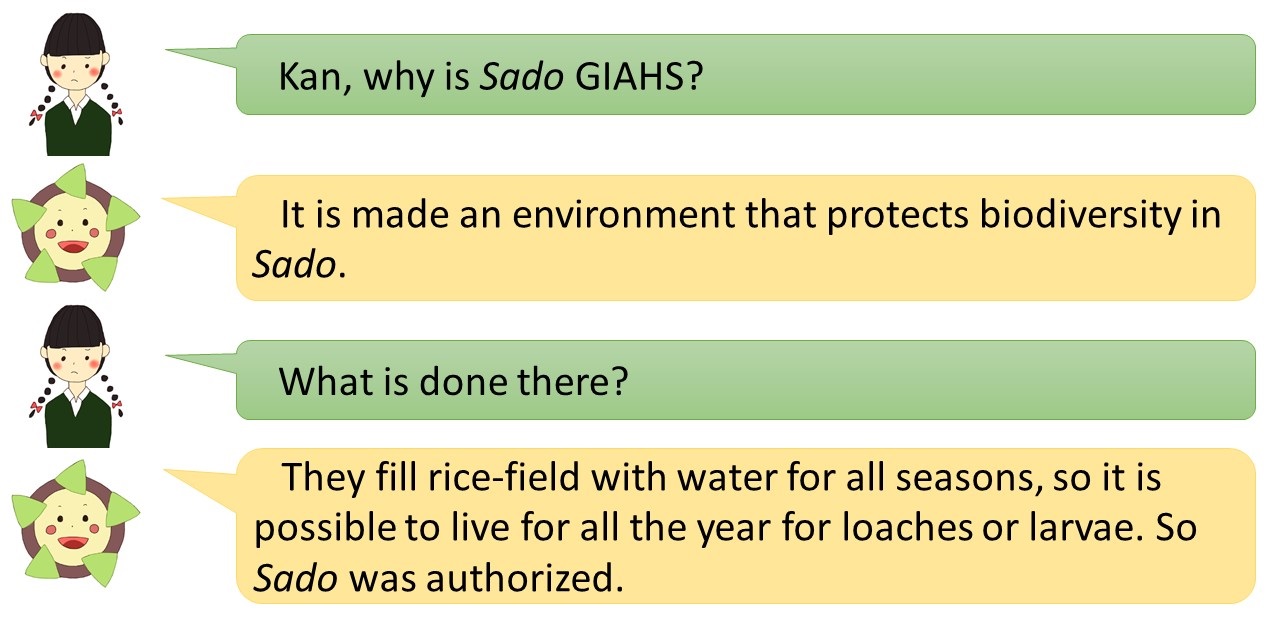Sado
Sado, a six largest island in Japan, is the last place which Japanese crested ibises live. It has high mountains and preserves biodiversity.
In Edo period, about 400 years ago, a gold mine was found in Sado. Then merchants or workers gathered there.
People live in Sado had to make a lot of food to supply to them. To do that, they made "Terraced rice fields" (1) and produced more crops.
The farmers in Sado were small scale so they were able to manage farmland easily and grow crops without agricultural chemicals.
Because of it, biodiversity has been preserved.
After the gold rush in Sado, still Japanese crested ibises, biodiversity, agriculture, and traditional cultures remained there.
※(1) Terraced rice fields: fields which cultivated sides of mountains.
Where is "GIAHS" in Sado?



